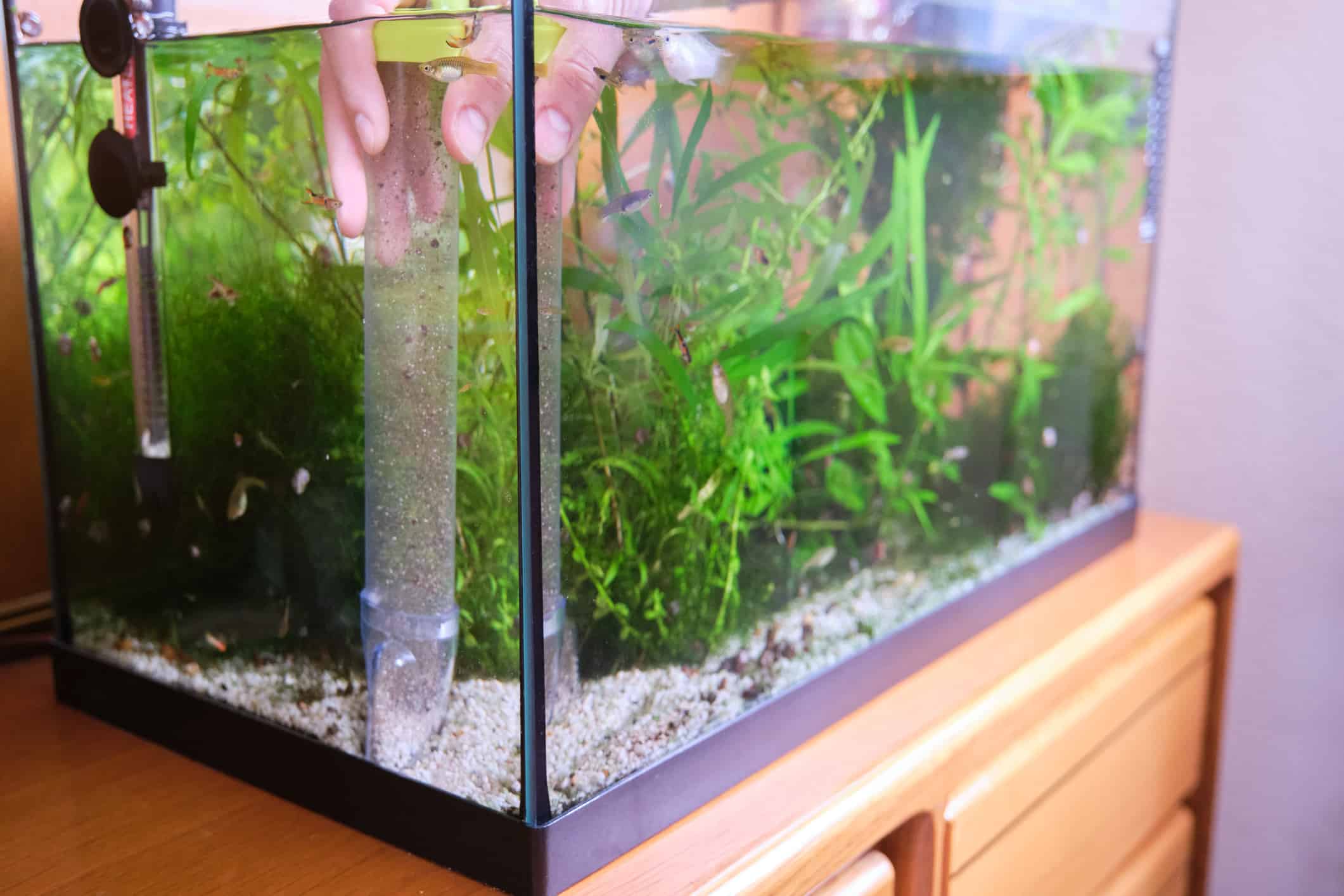Ammonia is a massive cause of problems in fish tanks. Practically all fish will produce ammonia as waste, so there isn’t a way to keep it out of your fish tank completely. Decaying matter, such as old food and waste, releases ammonia. To properly care for your fish, you must learn to reduce ammonia in your fish tank.
If left to fester, ammonia can lead to a range of health problems for practically all fish and plants. If your ammonia levels stay high, your whole fish tank may perish.
Testing is the best way to determine how high your ammonia levels are. If you notice high ammonia levels, you should take steps to correct it right away. Luckily, there are a few ways to go about this.
1. Do a Water Change
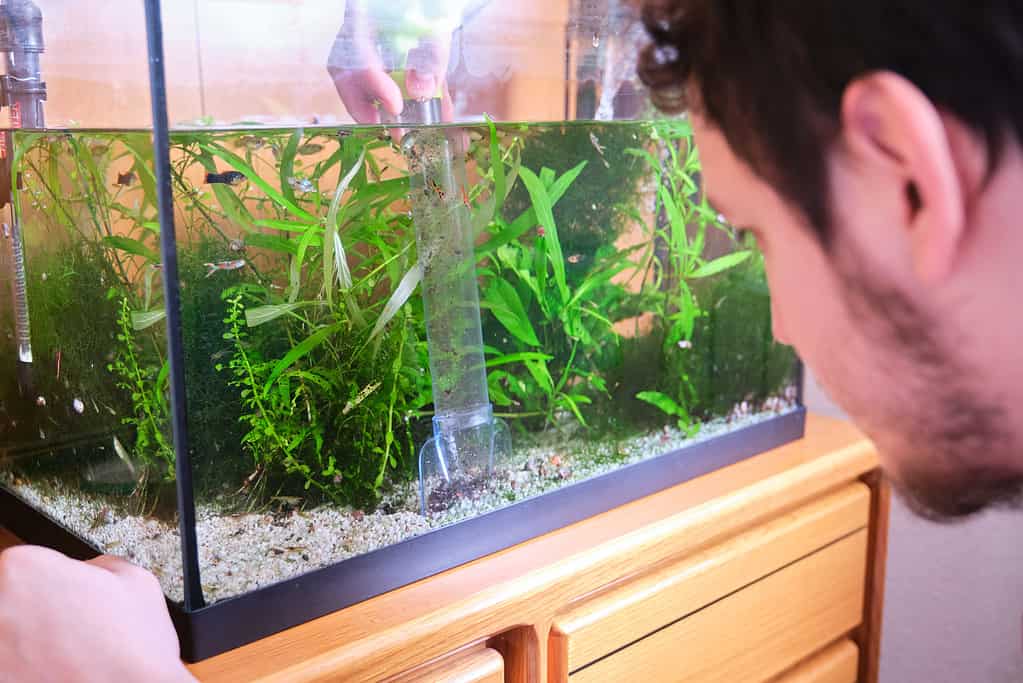
You can remove water while also cleaning the substrate, which can reduce the ammonia levels in several different ways.
©Ladanifer/iStock via Getty Images
The best way to reduce ammonia levels is to do a partial water change. Ammonia is in the water, so it makes sense that removing some of the water would also remove the ammonia. That said, you should only do a maximum of a 25% water change at a time. Otherwise, the sudden shift in the water can stress out the fish – sometimes even causing death.
That said, you can do a 25% water change daily over a few days to help reduce the ammonia concentration if needed. Often, this is only necessary if you’re only changing the water, though. The ammonia levels should drop substantially after only a couple of water changes.
When you add in the new water, be sure to do so slowly. You don’t want to adjust the temperature in the tank, as this can shock the fish. The new water should be free from chlorine and other contaminants. You’ll have to use a de-chlorinator to treat the water in most cases.
2. Use Ammonia Remover
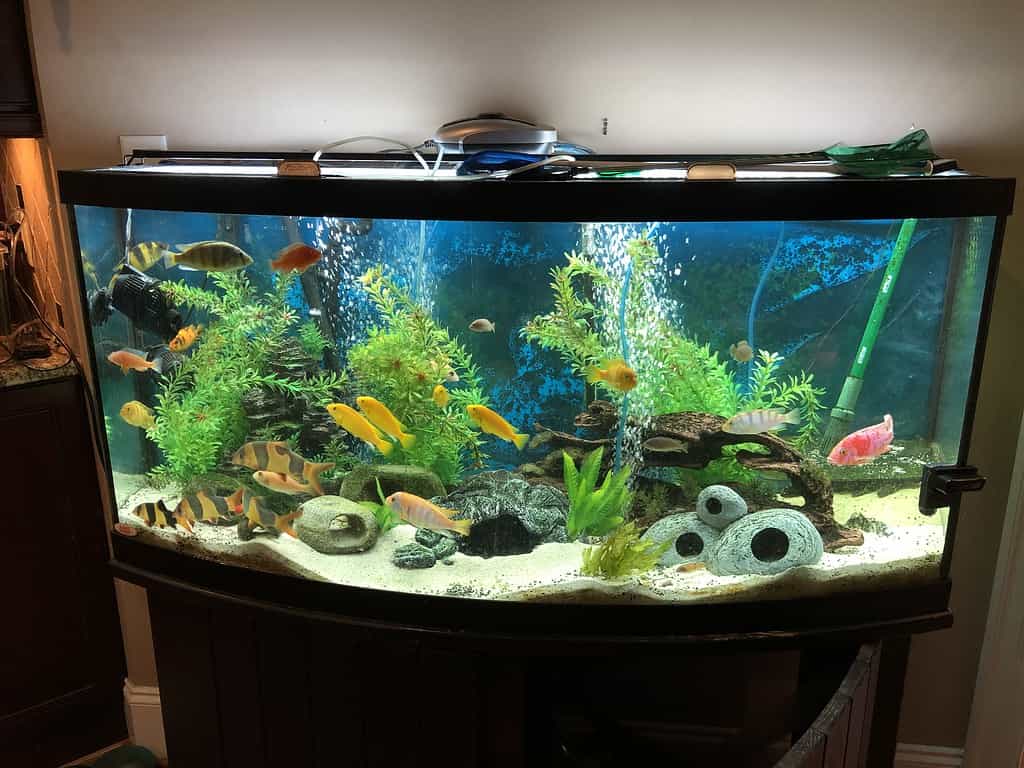
Ammonia remover isn’t suitable for
allfish tanks. In some cases, your fish or plants may be unable to handle it.
©LizWinfreyV, CC BY-SA 4.0, via Wikimedia Commons – Original / License
Sometimes, you may need to use an ammonia remover to reduce ammonia in your tank. These agents contain an ingredient that binds to the ammonia, making it less toxic. They aren’t safe for all fish and plants, so check before using them.
Always follow the directions on the package carefully, as these agents can be dangerous if misused. Adding too much at a time can lead to sudden changes in the water chemistry, potentially putting your fish into shock.
3. Increase Aeration

Plants can also help increase aeration, as they help add extra oxygen to the water.
©iStock.com/Juan Carlos Juarez Jaramillo
Aeration is necessary for all your fish to thrive. However, it also helps ensure that the beneficial bacteria in your tank can thrive, decreasing ammonia levels over time. This is not a quick fix. However, if your ammonia levels are high a lot, increasing the tank’s aeration may be a solid option.
There are many ways to aerate your fish tank. Using a filter that causes a lot of bubbling is an easy way to accomplish aeration, but you can also use an air stone or air pump to help diffuse even more air into the water.
Your tank’s oxygen needs may vary over time, depending on the plants and fish you have in the tank. Therefore, you may need to adjust your settings later.
4. Clean the Gravel and Filter
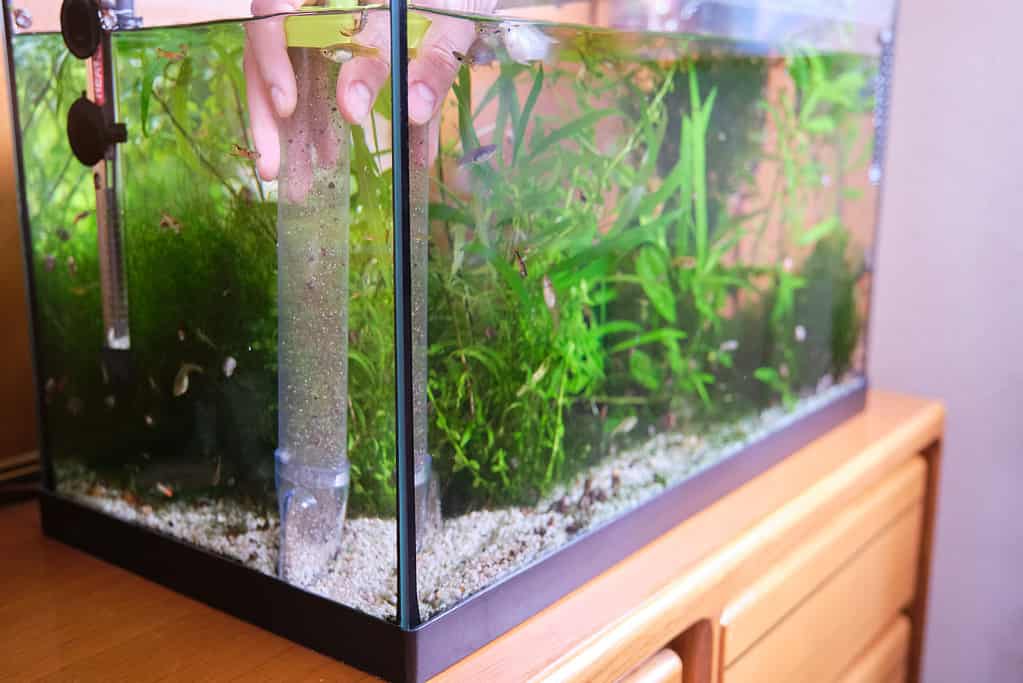
You’ll have to clean the gravel regularly. Any leftover food or other debris can lead to high ammonia levels.
©Ladanifer/iStock via Getty Images
As we stated above, any sort of decaying matter also leads to higher ammonia levels. Over time, fish waste and extra food will build up in the fish tank’s gravel, causing rising ammonia levels.
You’ll need to clean your gravel regularly, preferably at least once a month. However, it does depend on the number and types of fish you have. Some are dirtier than others.
To clean the gravel, you’ll need a siphon. Remove the fish from the tank as a safety precaution and begin siphoning the gravel. You should remove debris from the gravel, as well as water. Clean the gravel as much as needed before slowly reintroducing the fish into the tank.
Remember not to replace too much water at a time, which may reduce how clean you can get the gravel. You may have to do several sessions over a few days to get your gravel clean again.
5. Reduce Feeding
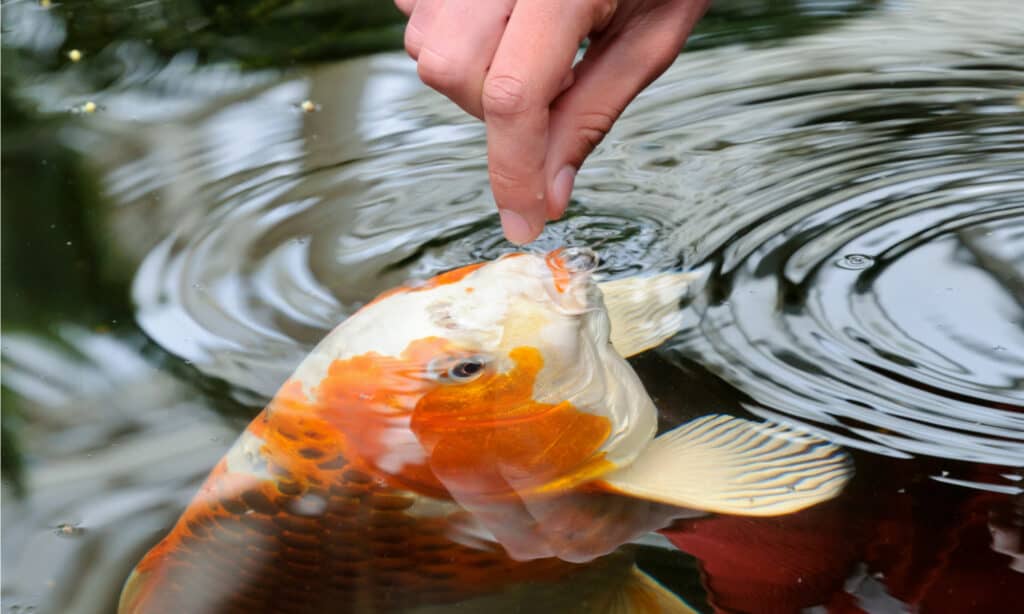
Be careful not to overfeed your fish. Otherwise, you may end up with
tonsof extra ammonia.
©Paul van den Berg/Shutterstock.com
Your fish should not be overfed. If you provide your fish with too much food, you risk some food not getting eaten. The uneaten food floats to the bottom of the tank, where it rots and releases more ammonia. To reduce the amount of ammonia in your tank, you may need to reduce the amount of food you provide.
Different fish species have different feeding patterns. However, typically, fish should only be given as much food as they can eat in a couple of minutes. If you notice a bunch of food floating to the bottom of the tank, it’s a clear sign that you’re overfeeding.
It’s almost always better to do a few smaller feeding sessions daily rather than one extensive session. However, again, take the exact species into account. Some fish don’t need to be fed daily at all.
6. Act Early and Test Often
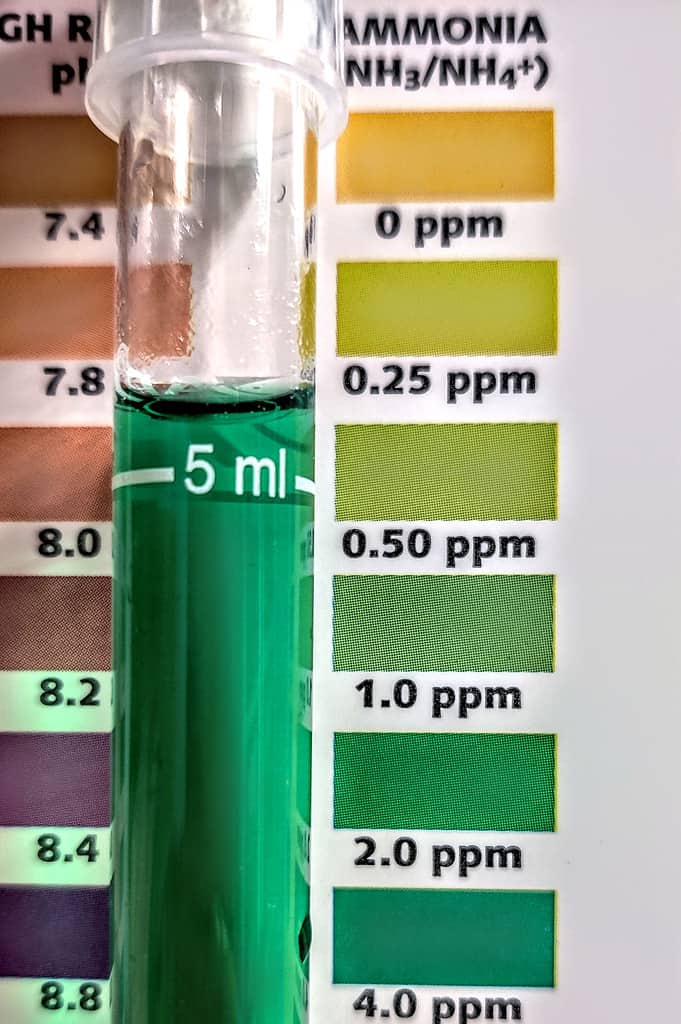
Testing for ammonia is very important. Otherwise, you may be unable to tell if your fish tank has high ammonia or not.
©Allison Cherry/iStock via Getty Images
Once your ammonia levels reach a certain point, it becomes much more challenging to bring them back down. Therefore, monitoring your water conditions is vital to prevent things from going past the point of no return before you even realize it.
Ammonia is an inescapable part of owning a fish tank. However, it should remain at a manageable level. If it’s rising too quickly, it may indicate underlying issues – like overfeeding or dirty gravel. Either way, you won’t realize there is an underlying problem unless you’re testing your water regularly.
We recommend testing your ammonia levels are least once a week. You’ll also want to test your nitrate and nitrite levels, which can help you promptly detect issues, as well.
Be sure to record your readings. Otherwise, you may find it hard to find patterns and identify underlying issues.
7. Add Beneficial Bacteria
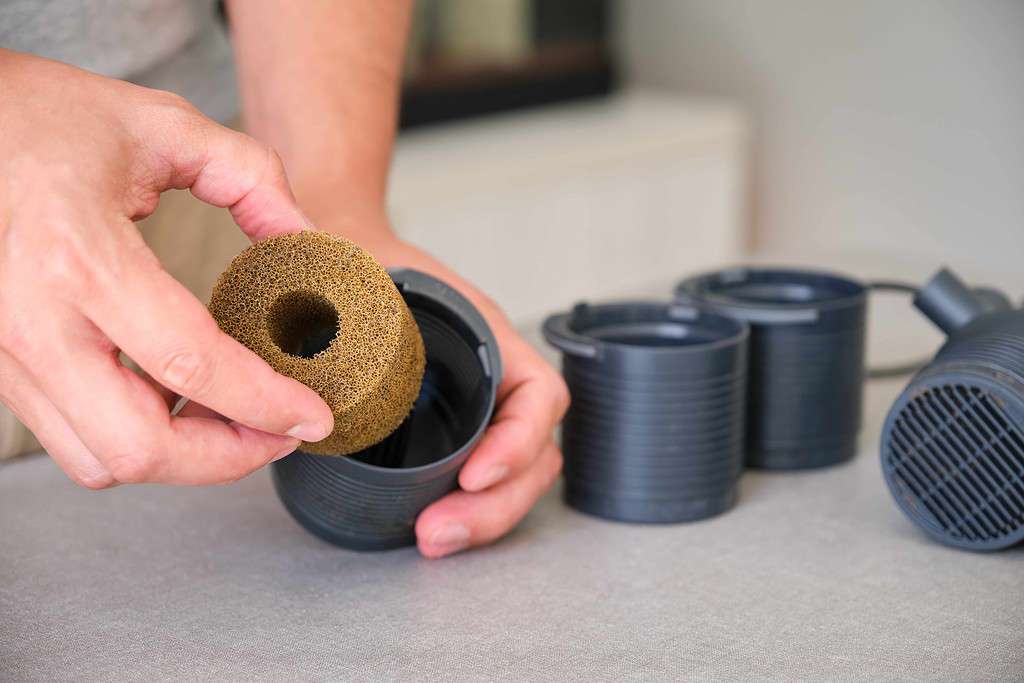
Your filter will quickly fill with good bacteria, which can help keep ammonia levels in check.
©Ladanifer/iStock via Getty Images
Beneficial bacteria can help turn ammonia into less harmful chemicals. Often, these bacteria set up in your filter. However, it can take a while for them to get going. In the meantime, ammonia spikes can be expected.
You can speed up the process by “cycling” your tank before adding fish or plants. Simply put, this involves adding ammonia to your fish tank to encourage this bacteria to grow before the fish are ever added. You’ll need to test the water for ammonia levels until they start going down, thanks to the beneficial bacteria.
Cycling your tank is an extra step, and if you already have fish, then you can go back and cycle it. You can purchase live bacteria cultures that can help add this beneficial bacteria faster. However, these can be hard to find, and they aren’t foolproof.
When possible, it is always better to cycle your fish tank beforehand.
Thank you for reading! Have some feedback for us? Contact the AZ Animals editorial team.

